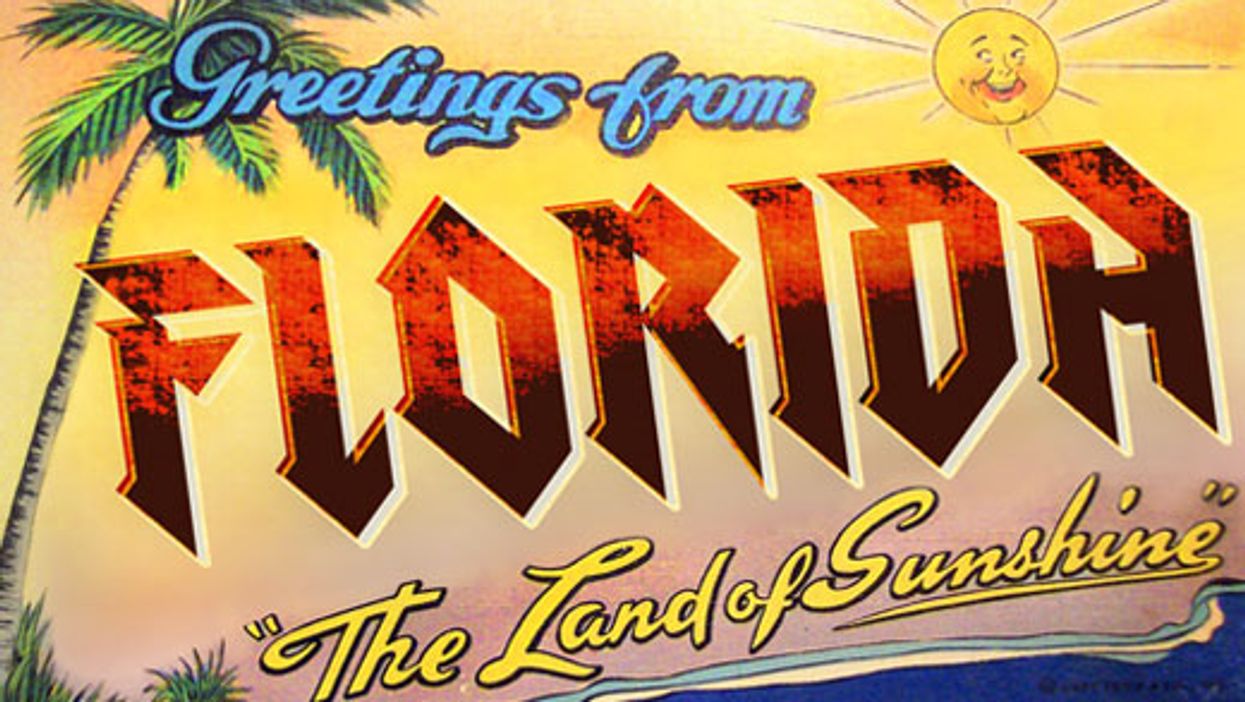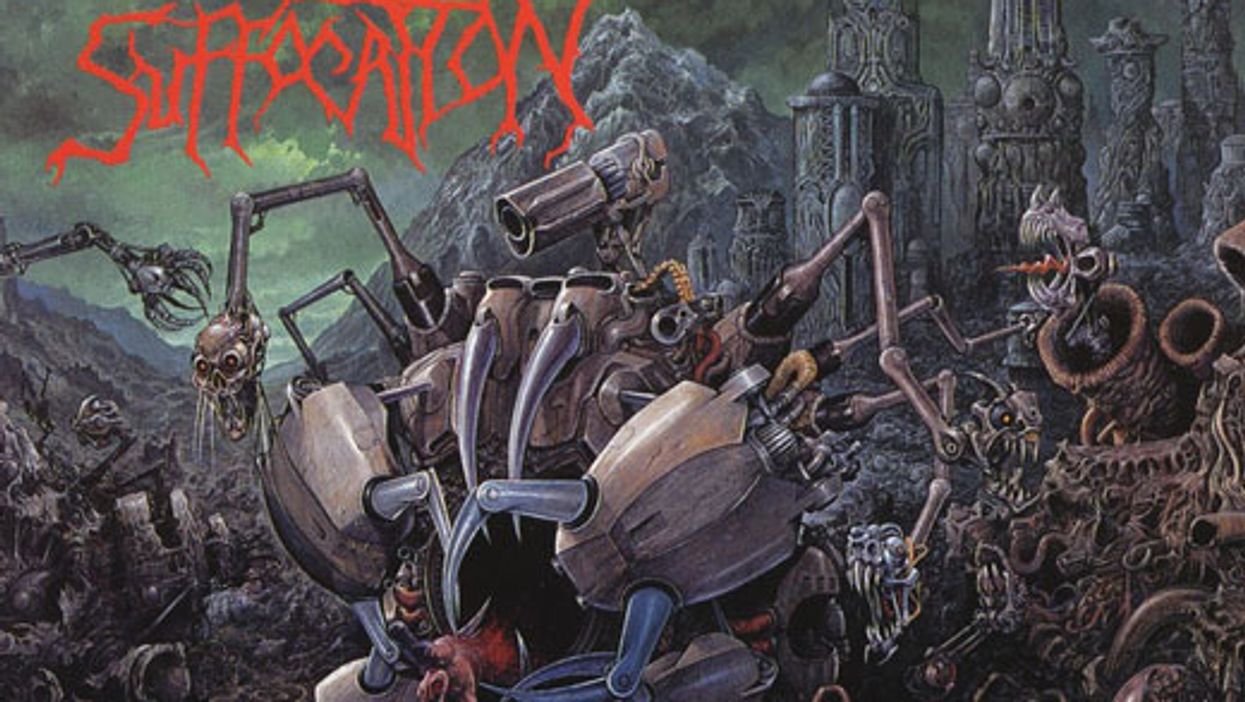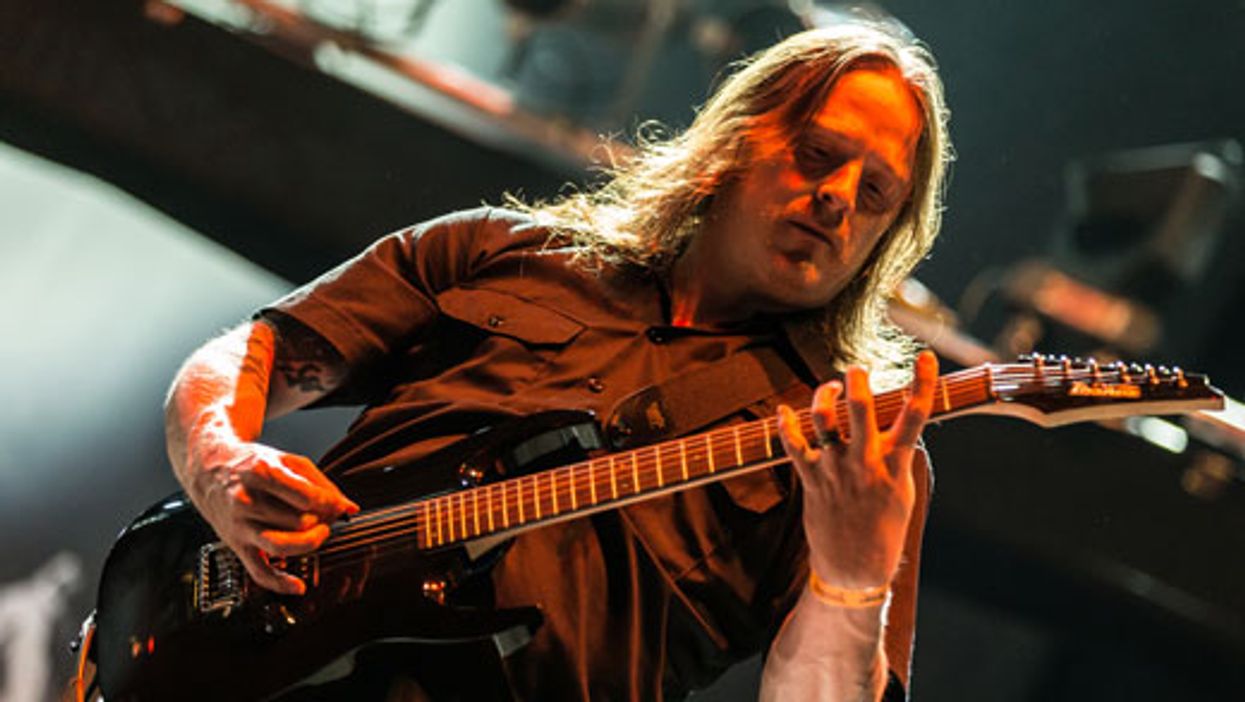Theory: Intermediate
Lesson Overview:
• Learn how to play repetitive riffs at a breakneck speed.
• Combine different rhythmic feels to create syncopated guitar parts.
• Understand how to stack tritones to make dark, sinister-sounding riffs. Click here to download a printable PDF of this lesson's notation.
Florida's Hate Eternal have been around for many years and have evolved their style and production with every album. Mastermind, vocalist, and guitarist Erik Rutan, who previously played in Morbid Angel, is also a producer and owner of Mana Recording Studios. While the influence that Morbid Angel had on him is undeniable, and particularly present on the 7-string songs from their latest album, Upon Desolate Sands, his style is unmistakable. It's dissonant and often layered and counterpointed by aggressive blast beats at blistering speeds. The production often favors the drums over the guitars and immediately puts a huge grin of disbelief on the face of any extreme metal fan. Hate Eternal are audibly rooted in Florida death metal but play it in a contemporary style that sounds unlike any other band and shies away from current trends.
Hate Eternal have influenced bands like Vitriol and helped to establish unresolved dissonant sounds and counterpoint guitar parts in extreme metal. In my opinion, they are the very essence of contemporary death metal.
Erik Rutan favors B.C. Rich guitars, mainly two custom Ironbirds that are tuned to C# with a Seymour Duncan SH-5 Duncan Custom bridge pickup and a Bill Lawrence L500 in the neck. He gets his crushing guitar tones from a Marshall JCM800 and Mesa/Boogie Dual Rectifier which he boosts with various pedals like the Maxon OD808, OD808X, and TS9 Pro+. As with most contemporary death metal however, you can get away with simply a high-output humbucker into a boosted high-gain tube amp.
Ex. 1 is a relatively fast riff that demonstrates a foundational element in Rutan's playing. He almost completely avoids power chords in favor of octave dyads and stacked tritones. (A tritone is an interval of three whole-steps—hence its name. It divides the octave in half and creates an augmented fourth or diminished fifth.)
In this case, the fast succession of dyads is played with slides that give the riff a chaotic and slurry feel while still sounding somewhat defined; the stacked tritones add the typical dissonance that is so prevalent in Rutan's playing.
Click here for Ex. 1
Ex. 2 features an extensive use of stacked tritones—another trademark of Rutan's style. Instead of typical root-5 power chords, Rutan plays a series of four-note chords comprising two tritones stacked on top of each other. We then move these tritone chords around in thirds before adding some chromaticism. In the second half of the riff, the guitars veer off into different rhythms to create some interesting counterpoint.
Click here for Ex. 2
Ex. 3 also makes use of stacked tritones in combination with slides at a very high tempo. This riff is inspired by the noisy, chaotic verse in “Hell Envenom" from the Fury and Flames album. These types of riffs are often completely drowned out and serve mostly to add to the wall of noise already created by the ferocious drumming.
Click here for Ex. 3
Reaching into higher registers, Ex. 4 illustrates a counterpoint guitar line that's typical of Hate Eternal. It moves down the fretboard before ending with both guitars creating an arrhythmic harmony effect. Gtr. 1's higher melody moves in minor seconds and tritones, while Gtr. 2 plays a harmony part that moves between minor second, minor seventh, and tritone harmonies. What makes these lines compelling is that harmonic changes are created by moving the melody lines independently: One line stays static while the other creates different harmonies before reversing roles. This effect works best if both guitars are panned hard to left and right.
Click here for Ex. 4
A “slower" riff that mixes triplets with tremolo-picked tritones, Ex. 5 is a rather simple idea that moves chromatically. Notice how the tritones keep within the same shape as the stacked tritones in our previous examples. These riffs are often used for bridge parts or intro riffs.
Click here for Ex. 5
The riff in Ex. 6 alternates our stacked tritone shape with a chugging low 6th string. Riffs like this are similar to what you might hear in the verse section of the band's “I, Monarch" or “Hunting Abound." While going higher up the fretboard, the chords don't alternate with an open string, but with a chord a major second below.
Click here for Ex. 6
A breakdown riff, Ex. 7 combines a repeating 32-note rhythmic pattern that's broken up by octave dyads with a short burst of stacked tritones.
Click here for Ex. 7
Ex. 8 closes out this lesson with a rapid-fire shred lick. There's no rhythm guitar underneath—both guitars play this lead simultaneously. The figure is a ripping melody that moves chromatically and ends with an ear-piercing measure of notes at the 24th fret, while Gtr. 2 plays a harmony. This type of lead doesn't serve as a guitar solo but rather as a twisted, extreme death-metal version of the type of melodic harmony Iron Maiden are famous for.


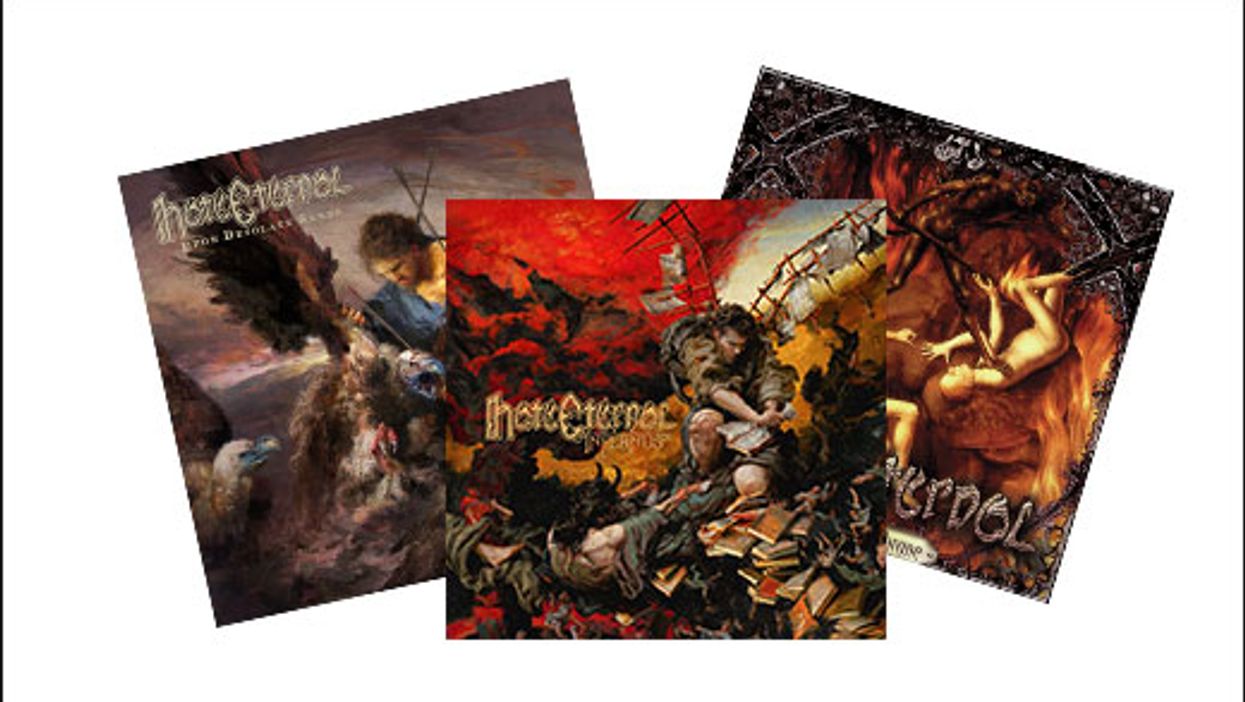





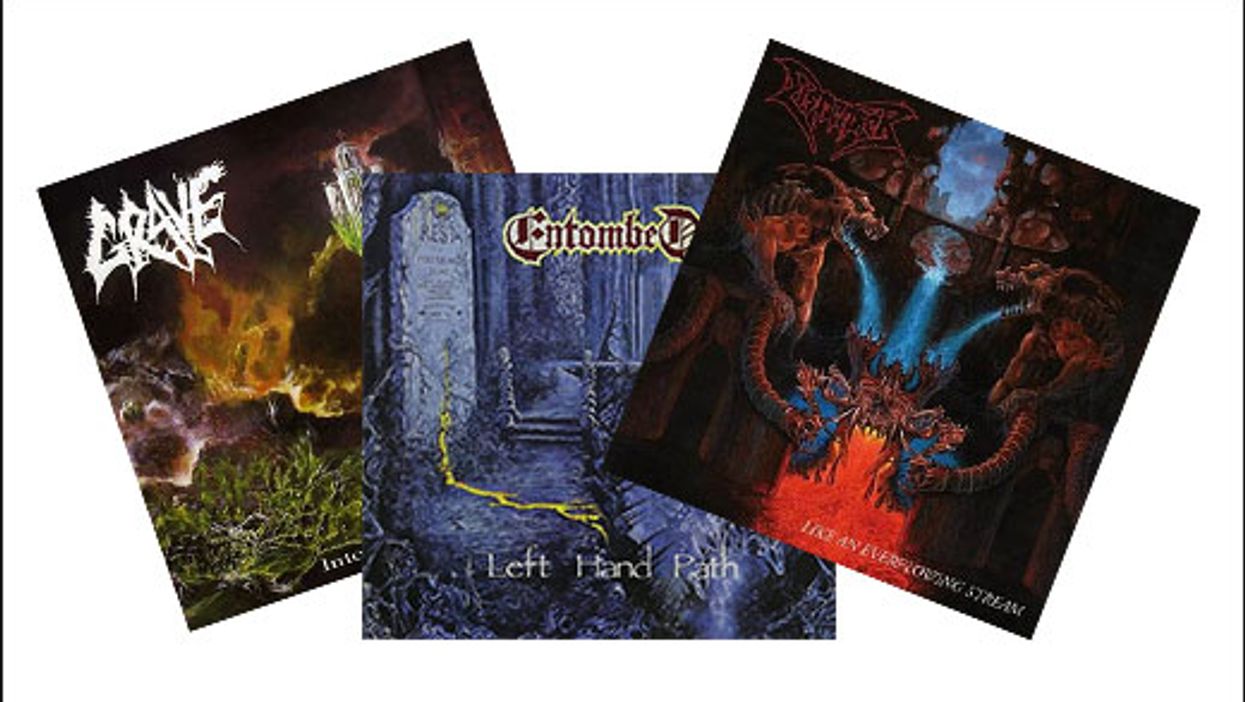


![Rig Rundown: Russian Circles’ Mike Sullivan [2025]](https://www.premierguitar.com/media-library/youtube.jpg?id=62303631&width=1245&height=700&quality=70&coordinates=0%2C0%2C0%2C0)



